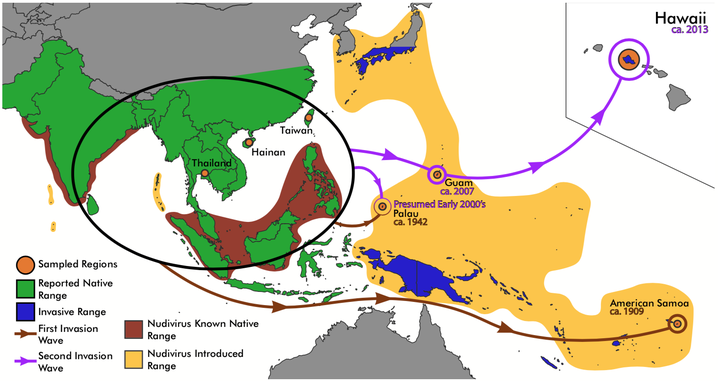Transpacific coalescent pathways of coconut rhinoceros beetle biotypes: Resistance to biological control catalyses resurgence of an old pest
 Image credit: B Reil
Image credit: B ReilAbstract
Biological control agents have several advantages over chemical control for pest management, including the capability to restore ecosystem balance with minimal non-target effects and a lower propensity for targets to develop resistance. These factors are particularly important for invasive species control. The coconut rhinoceros beetle (Oryctes rhinoceros Linnaeus) is a major palm pest that invaded many Pacific islands in the early 20th century through human-mediated dispersal. Application of the Oryctes nudivirus in the 1960s successfully halted the beetle’s first invasion wave and made it a textbook example of successful biological control. However, a recently discovered O. rhinoceros biotype that is resistant to the nudivirus appears to be correlated with a new invasion wave. We performed a population genomics analysis of 172 O. rhinoceros from seven regions, including native and invasive populations, to reconstruct invasion pathways and explore correlation between recent invasions and biotypes. With ddRAD sequencing, we generated data sets ranging from 4,000 to 209,000 loci using stacks and ipyrad software pipelines and compared genetic signal in downstream clustering and phylogenetic analyses. Analysis suggests that the O. rhinoceros resurgence is mediated by the nudivirus-resistant biotype. Genomic data have been proven essential to understanding the new O. rhinoceros biotype’s invasion patterns and interactions with the original biotype. Such information is crucial to optimization of strategies for quarantine and control of resurgent pests. Our results demonstrate that while invasions are relatively rare events, new introductions can have significant ecological consequences, and quarantine vigilance is required even in previously invaded areas.